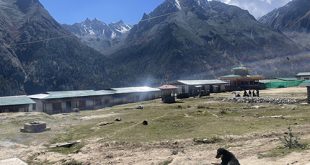Observed annually on 11th July, the World Population Day offers a vital opportunity to reflect on global and national population trends and, more importantly, to root those reflections in the lives, aspirations, and challenges of people.
This year’s theme, “Empowering young people to create the families they want in a fair and hopeful world,” centers the voices and futures of youth between shifting demographic realities.
The day also marked the launch of the State of World Population Report 2025, which was officially launched by Her Majesty Gyalyum Sangay Choden Wangchuck, who has served as the United Nations Population Fund’s (UNFPA) Goodwill Ambassador since 1999.
World Population Day was first observed in 1987, when the global population reached 5 billion. Today, that number has surpassed 8 billion and is projected to reach 10 billion by 2050.
These figures are more than statistics, as they show the complexity and urgency of shaping population policies that align with people’s needs and rights.
Speaking at the event, Cabinet Secretary, Kesang Deki, acknowledged UNFPA’s continued support in generating evidence, shaping policy dialogue, and promoting reproductive rights. She emphasized that population issues today are more complex than ever before. “Globally, we have surpassed 8 billion people, but the story is not one of a single growth. We are witnessing a world in transition,” she said. “Some countries are facing an increase in population, while others, including Bhutan, are battling with declining fertility, population aging, and changing family structures.”
These shifts, she noted, are not abstract; they are being felt across homes, villages, and institutions in Bhutan.
The report highlights that Bhutan’s declining total fertility rate, coupled with a rising trend of young people delaying marriage and childbearing, reflects the complex choices youth must make today. “They reflect the complex choices our youth are navigating in a rapidly changing world, balancing education, career aspirations, and the desire to build families,” she said.
The government, she stressed, has a responsibility to empower the youth by providing the support, opportunities, and confidence they need to make life-defining decisions freely. These demographic transitions also highlight progress, particularly in women’s education, access to reproductive health services, and increased life expectancy.
A key outcome under Bhutan’s 13th Five-Year Plan is the creation of an operational, shock-responsive, inclusive, and comprehensive social protection system by 2029.
Health Minister, Tandin Wangchuk, also noted the urgency of creating a society where people are supported in their choices. “The global population continues to grow, but two-thirds of people now live in countries where fertility rates have fallen below replacement levels,” Lyonpo Tandin Wangchuk said. Moreover, he said, “We are seeing fewer births, aging populations, and shrinking workforces. The real population crisis today is not about having too many people or too few. It is about whether we are creating the right conditions for people to live the life they want.”
Lyonpo identified key strategies of Bhutan’s low fertility rate: economic uncertainty, lack of quality childcare, and inadequate support for women. Lyonpo said, “When jobs are scarce, childcare is costly, and women do not feel supported, they hesitate to start or grow a family.”
To address this, Lyonpo says there should be policy reforms that invest in parental leave, create flexible working environments, and promote more equitable responsibilities at home.
Presenting Bhutan’s population trends, the Chief Statistical Officer at the National Statistics Bureau, Tashi Dorjee, explained that population dynamics affect everything, from the number of children in schools and demand for healthcare to the kind of housing needed. For a small country like Bhutan, he said, demographic changes such as increased migration can significantly impact long-term development prospects.
“When there is a change in the working population, that puts a lot of pressure on national productivity, pension systems, and long-term economic stability,” he said.
He noted that in 1994, Bhutan’s population was growing at 3.1 percent per year, doubling roughly every two decades. “That was a young, growing society,” he said, “but today, that number has dropped below the replacement rate.”
With Bhutan’s current total fertility rate at 1.7 and replacement level at 2.1, it would now take 150 years for the population to double. “Once population starts to decline, it is very expensive to reverse,” Tashi said. “This is a moment to act, to understand why families are shrinking, to support parents, and to adapt our economy before the trend becomes irreversible.”
He added, “For Bhutan, these trend means fewer students in classrooms, fewer young people in the workforce, and fewer caregivers for an aging population. Moreover, there will be more beds in elderly care than in maternity wards,” he said.
The report’s findings also show that between 2017 and 2047, Bhutan’s elderly population will more than double. In 2017, less than 9 percent of the population was aged 60 and above, and by 2047, nearly one in five Bhutanese will be elderly.
The proportion of those aged 65 and above is expected to rise steeply from 5.9 percent in 2017 to 13.4 percent by 2047.
Bhutan’s median age, which was 22 years in 2005, has risen to over 30 today, and will reach 40 by 2047.
Tashi also mentioned the urgency of this trend and said, “The time to act is now, before time grows old. We will never get this alignment of numbers and potential again.”
The World Population Day event in Bhutan served as an important platform to reflect on the country’s demographic realities and future. From acknowledging global trends to highlighting Bhutan’s declining fertility rate, aging population, and evolving family structures, the discussions emphasized the urgency for policy responses grounded in empowerment, equity, and support.
 The Bhutanese Leading the way.
The Bhutanese Leading the way.



